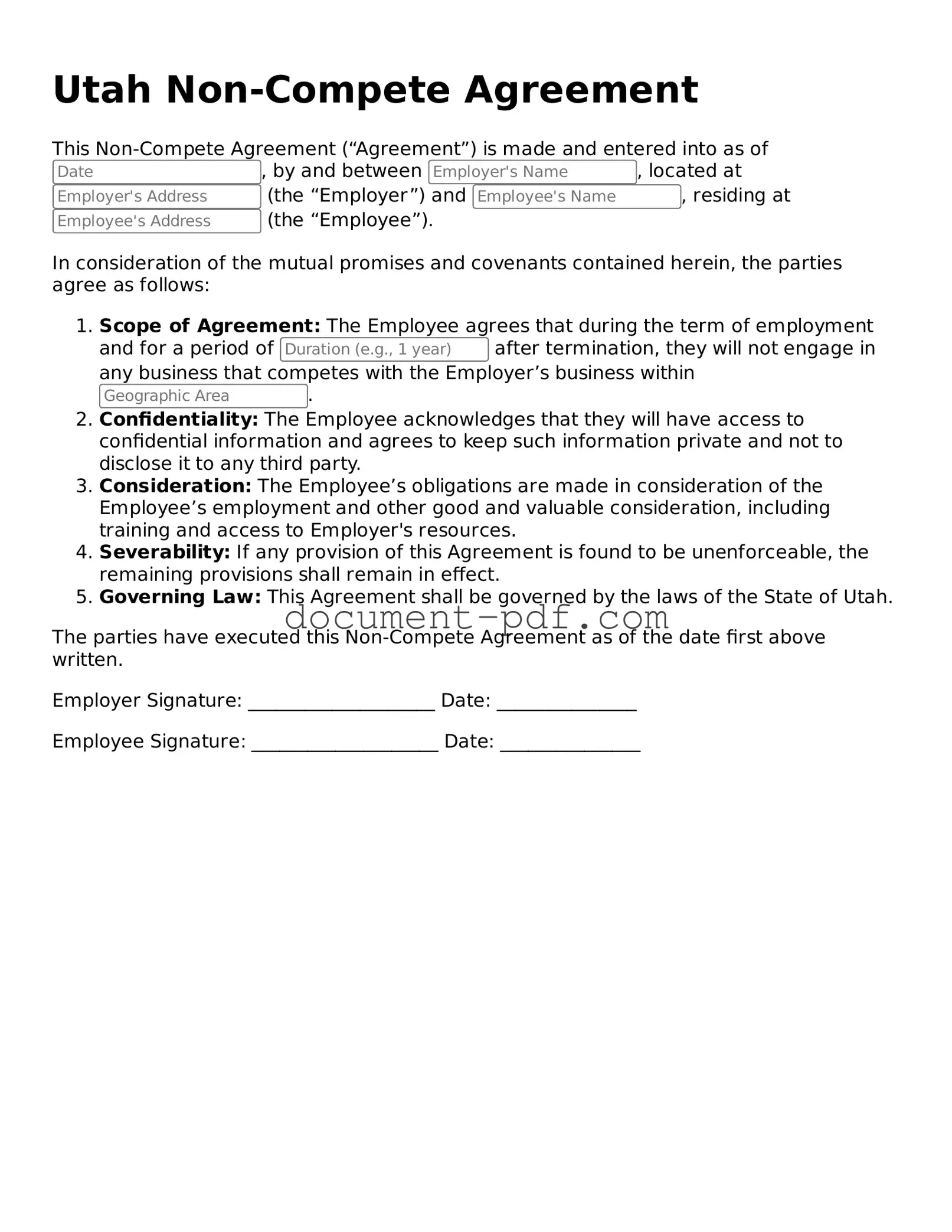Attorney-Verified Utah Non-compete Agreement Template
A Utah Non-compete Agreement form is a legal document designed to restrict an employee's ability to work for competing businesses after leaving their current employer. This agreement aims to protect the employer's confidential information and business interests while providing a clear understanding of the terms for both parties. If you are considering using this form, please take the time to fill it out by clicking the button below.
Access Non-compete Agreement Editor Here
